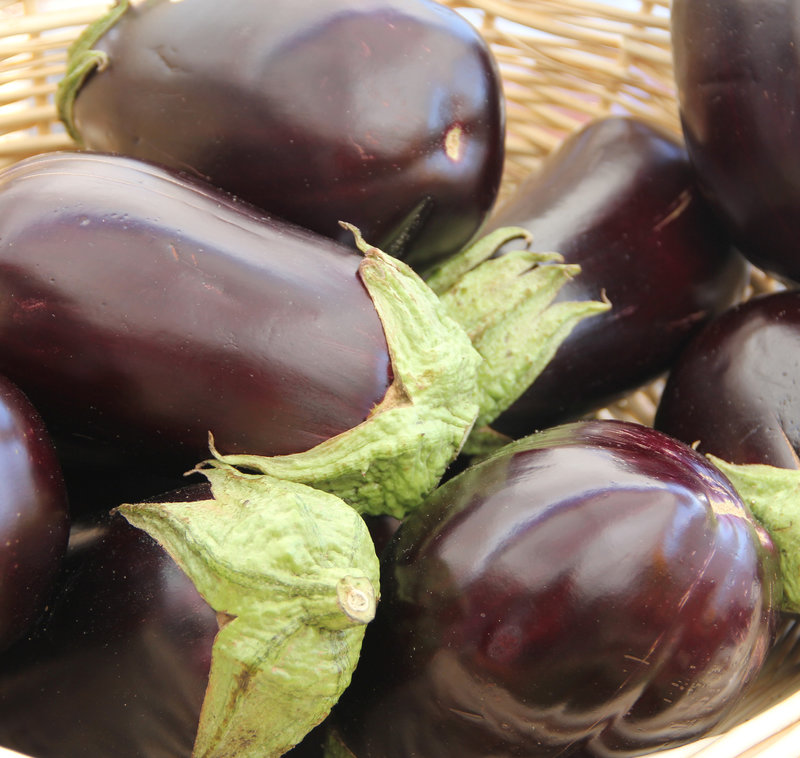Basket
Text: CUINA MAGAZINE Photo: Anna García Frigola
Beautiful eggplants
Introduced by the Arabs, the “albergínia bonica” is only found in the Empordà
Today we are dealing with the albergínia bonica, one particular variety of eggplant - or aubergine - which was introduced to Catalonia by the Arabs, and is now found in the Empordà where it has managed to survive in only a few market gardens in the face of stiff competition from imported foreign varieties.
It has a rounded oval shape and is a shiny deep violet colour with pale white flesh and small seeds. It has a mild flavour and is not bitter at all like some other varieties. As with all aubergines, it is extremely versatile and lends itself to nearly every culinary scenario possible, from traditional cakes to roasting it on its own or along with grills, stews and also stuffings. Like most vegetables, it is a summer crop, although we can enjoy it through until late autumn.
Most of the aubergine, around 92%, is water and that means it is not exactly packed with energy. Nor is it known for having any special nutritious value, but it does provides fibre, especially if the skin is consumed as well. Once cooked, its content in minerals and vitamins does not vary much. In low doses it has potassium, and also contains phosphorus, calcium, magnesium and iron. As for vitamins, the most important is B9, along with vitamin B12, which assists in the synthesis of DNA, making it a perfect staple in the early stages of pregnancy. With vitamin C as well, it acts as an antioxidant and aids detoxification processes, among its other functions.
Strangely enough, the eggplant is related to both the tomato and the potato. And one last thing: don’t be put off that it is a member of the nightshade family!

